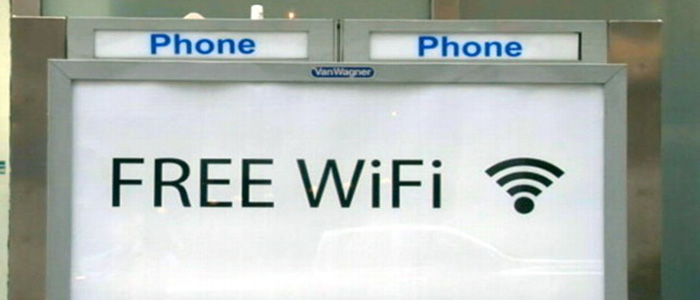It’s no secret that technology has the potential to transform just about every facet of our society – but this is especially true in inner cities. One of the biggest examples of this in recent memory is undoubtedly the introduction of the smartphone. What was once considered a luxury that only the wealthiest among us could afford is now available to millions of people. What’s more than that, we’re talking about ubiquitous access to a device that is literally millions of times more powerful than the equipment used to send astronauts to the moon in the 1960s.
Another great example of how technology is changing urban dynamics is actually not new in and of itself. The technology has been around for quite a while – it’s the approach to the technology that is unique in this context.
Bringing People Together, One Phone Booth at a Time
Though it may be hard to believe, at one point there were nearly 10,000 active phone booths located throughout New York City. If you’ve been in Manhattan in the last decade, you can confirm that the vast majority of them have fallen into disarray. They exist as little more than a monument to an era that has long since ended – and they’re an absolute eyesore, too.
Not too long ago, officials realized that the cost to actually remove these phone booths would be enormous – to the point where it wasn’t really worth the effort. But rather than just allow them to sit idle, city leaders came up with a different plan: they would convert 7,500 of those old phone booths in strategic locations throughout the city into hotspots offering fast, free Wi-Fi service to anyone in the area.
Each Wi-Fi hotspot was designed to cover a 150-foot radius and offered 1GB/s service. In addition to being a perfect way to transform the city’s payphone infrastructure into a more cutting-edge example of modern technology, it would also significantly increase the reach of broadband Internet to those urban neighborhoods that needed it the most.
Why is all of this important within the context of urban dynamics? Because despite the increased popularity of broadband Internet over the last decade, there are still millions of households that do not have access to it – something that is as true in urban neighborhoods as it is in small towns. It’s also consistent among education levels, income levels and with demographic groups of all ages.
Yet at the same time, the benefits of fast, reliable access to broadband Internet are enormous – particularly in those urban environments. In regard to some of the economic benefits, broadband Internet makes it easier for people to search and apply for jobs. It allows businesses to cut costs by leveraging new technologies like e-recruiting, which makes it easier to attract and retain top talent. It allows employees to work smarter, not harder, thus increasing productivity for businesses.
This level of broadband access can also bring critical benefits by way of improved social outcomes. Experts agree that high-speed Internet access essentially democratizes access to education, for example, by letting everyone enjoy the same inventory of educational platforms and resources. For the types of people in urban environments who are still being socially isolated, the simple task of getting online lets them connect with others like never before.
But maybe the biggest example of why all of this is so critical came as a result of the COVID-19 pandemic: telehealth. It has long been known that telehealth can improve healthcare results for people who would otherwise not have access to the types of medical providers they needed. The pandemic may very well have acted as an accelerant for this digital health revolution. As one study revealed that patient adoption of telehealth solutions at the beginning of 2020 was up 33% year-over-year. It was also anticipated that the market itself would reach an incredible $185.6 billion in value by as soon as 2026.
So not only does telehealth help urban environments by expanding access to care, but in a situation like COVID-19 it can help keep staff and patients safe by reducing disease exposure, preserve the scarce supplies of personal protective equipment or PPE, and reduce patient demand on certain facilities so that available resources can go to those who truly need to be there.
All this because someone decided they were tired of looking at old, dirty phone booths.


















Add comment